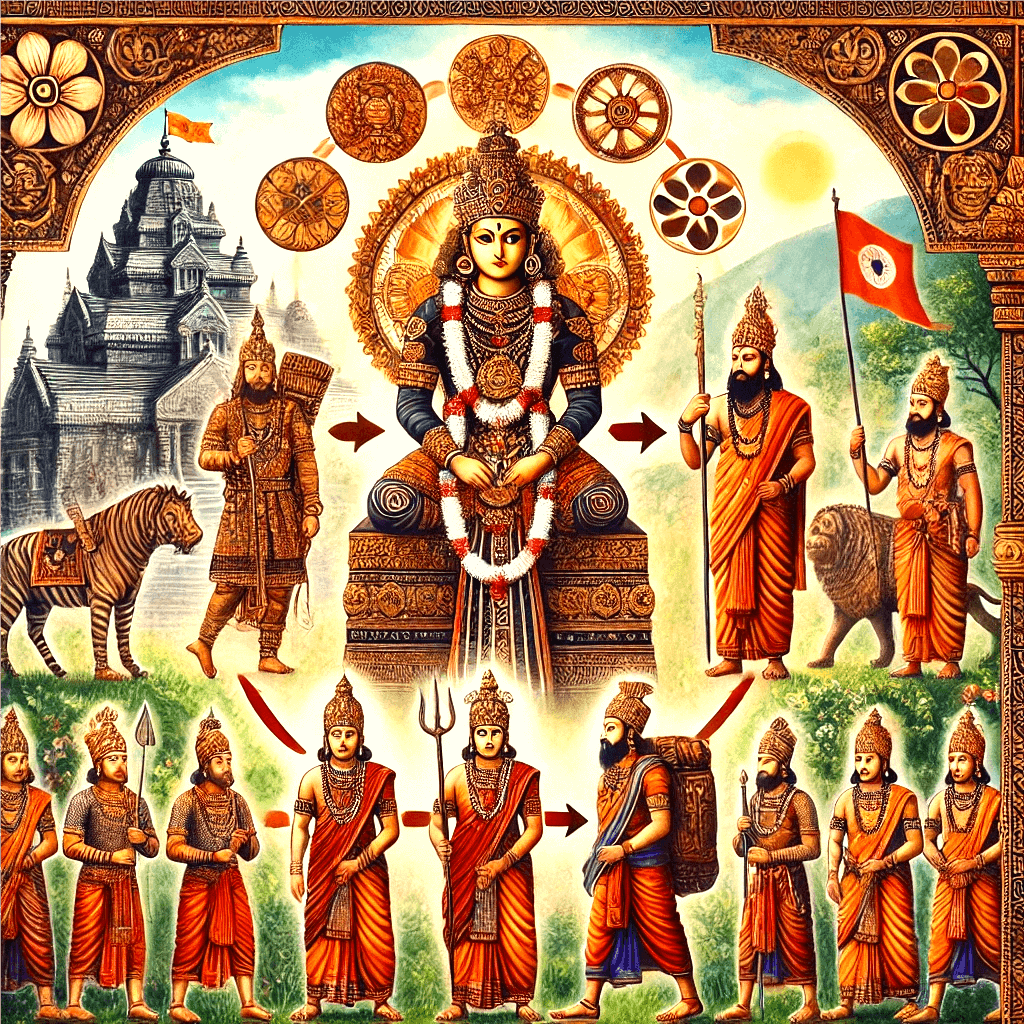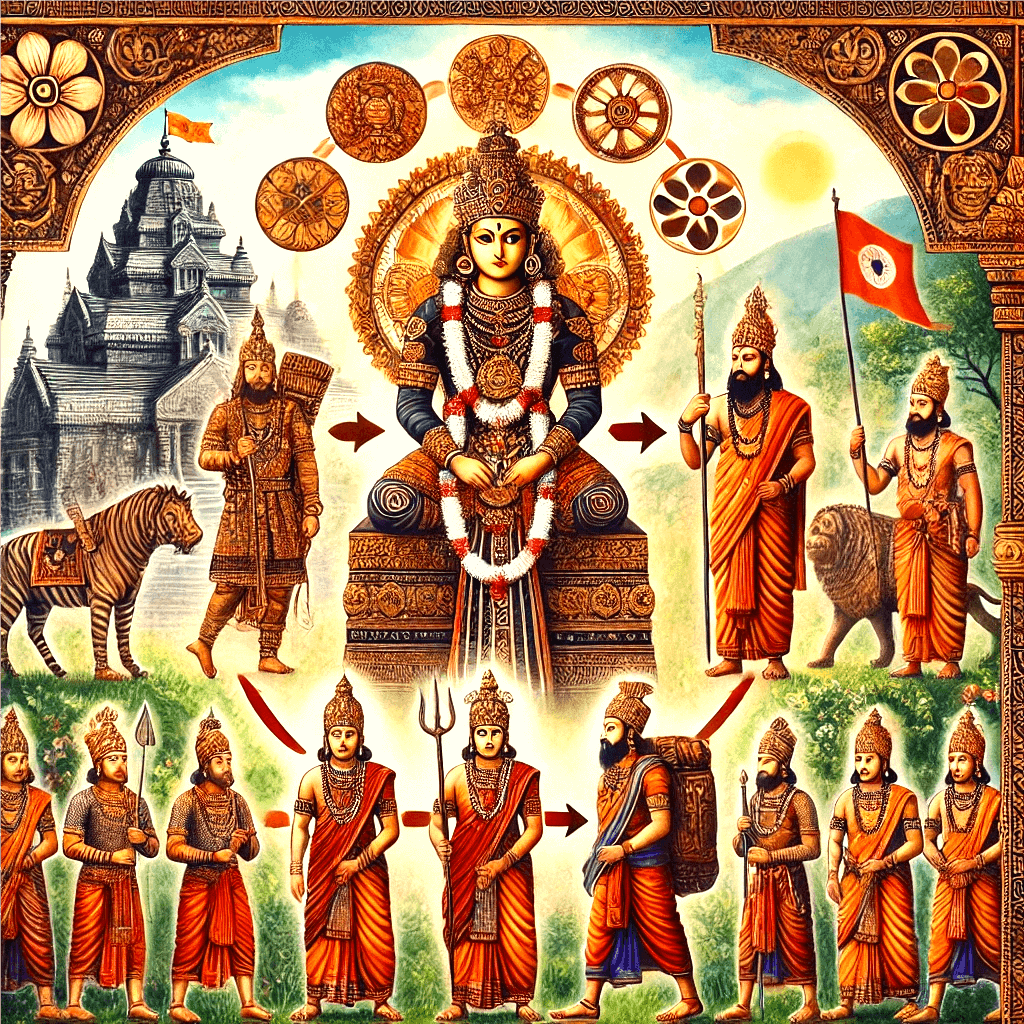The surname ‘Singh’ has a history of association with warriors in India, especially amongst the Rajputs and Sikhs. However distinctive are the Meeteis in Manipur. After the Vaishnavite form of Hinduism penetrated Manipur during the 18th century, the term ‘Singh’ was adopted. This paper examines all aspects of Difference of Singh in Manipur including its origination, acceptance and impact and the consequences which transformed Meitei identity through various religious and cultural barriers.
Sanamahism: “Pre-Hindu” Manipur and Its Indigenous Meitei Religion
Religion as practiced by the Meitei people of Manipur was Sanamahism, a nature-centered faith, before being influenced by Hinduism. It venerates ancestors and worships a supreme deity called Sanamahi. Society was regulated and structured by traditional clans termed as Salais with divinity resting in the monarchy.
During this time, clan-based social structures prevailed followed by the label ‘Sanamah’ for the head of the clan, which extended to influence the structure beyond clan boundaries too. Unlike in Hindu society, Singh and Devi were absent in titles.
The Growth of Singh as a Title in Manipur and the Introduction of Hinduism In the Region
The changes in the Meitei society started to take place during the rule of King Pamheiba. It is said that there was a division of the Hindu religion to worship Lord Krishna, called Gaudiya Vaishnavism, and it was brought over by the Bengali and Assamese Brahmins during his reigned rule.
As Hindu practices spread in Manipur, they caused a major change in the religion’s system, which included:
Traditional Meitei names were substituted for other more prevalent names.
The caste system was established which classified Meitei warriors as Kshatriyas.
Vaishnavite Meiteis also started to use the common titles of Singh (lion) for males and Devi (goddess) for females.
The inscription of the term Singh is considered an act of supremacy and assertion by North Indian Kshatriya warriors showing that Meitei men have power and courage. This was part of a wider process of Sanskritization, where the adoption of local customs was done to enable structures of Indian caste society.
The Institutionalization and Spread of Singh
After King Pamheiba, the further kings of Manipur became believers of Vaishnavism, after which Hindu practices like customs, rituals, and the religion’s core fundamentals of idol worship greatly influenced the Meitei people to the extent. The ever growing popularity of Singh among Meitei men can be discussed in terms of:
Documents of the sovereign: The Meitei politicians issued decrees that required the adoption of Hindu names and titles as a head of state.
Brahmin Influence: The Bengali Brahmins who had authority in religious matters led to the adoption of Sanskritic customs.
Social Prestige: The caste system in India meant that over time, having ‘Singh’ in ones name became an indicator of social rank. This surname became associated with the dominant warrior caste.
Impact on Meitei Society
The shifts in Manipurs identity and its relation to Hinduism and its surrounding regions done by Chinese empires has had a historic impact:
Religious Division: A large number of Meitei people accepted the Vaishnav faith but a sizeable population equally strong in Sanamahism was present as well. This schism is still visible.
Loss of Indigenous Traditions: A large number of native Meitei customs were and are being abandoned as Sanskritic ideas sweep the region, though selective attempts to regain custom practices are increasing in modernization.
Naming Conventions: A large number of contemporary Hindu Meitei in Manipur continue to carry ‘Singh’ and ‘Devi’ while a few now use other Meitei surnames and patriarchal given names.
Revival of Sanamamism and Rejection of ‘Singh’
Since the latter half of the 20th century, the Meitei have experienced something of a cultural renaissance with an increasing attempt to reassert indigenous identity by practicing Sanamahism. In tandem:
Some Meitei have unbearably casted off ‘Singh’ and ‘Devi’ from their names.
There is a growing will to promote the traditional religion, customs, and language of the Meitei people.
Students and public intellectuals are looking back at the effects that worship of Hindu religion brought on Meitei society.
This movement demonstrates the greater challenges over identity in Manipur as people are trying to negotiate their Hinduisms with their pre-Hindu identity.

Conclusion
The case of ‘Singh’ in Manipur is a captivating case of the mixing and interaction of religion and cultures in the formation of identities. While it was first associated with the name change during the Vaishnavite revolution of the Meitei society, it’s use today’s context symbolizes the overpowering impact of Hinduism in Manipur. At the same time, the fire that is the modern resurgence of Sanamahism tended alongside Meitei heritage is a reminder that identity is not unchanging—people and communities do unearth their history, but in different and novel manners.
Is ‘Singh’ going to be an inseparable part of Meitei identity or will it be discarded gradually is a matter that will be determined by the descendants and their understanding of their identity. Still, no matter which way it goes, it’s history will invariably always be a part of the rich and ever-changing, and fascinating history of Manipu.
Read more: https://reportersnetwork.icu/ https://insightfulindia.us/





